
| Sinister or Frilled Bark Moth (previously known as Lophodes sinistraria) BOARMIINI, ENNOMINAE, GEOMETRIDAE, GEOMETROIDEA | (donherbisonevans@yahoo.com) and Stella Crossley |
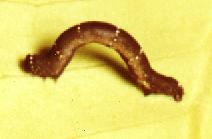
black and white form
(Photo: Don Herbison-Evans, Sydney, New South Wales)

| Sinister or Frilled Bark Moth (previously known as Lophodes sinistraria) BOARMIINI, ENNOMINAE, GEOMETRIDAE, GEOMETROIDEA | (donherbisonevans@yahoo.com) and Stella Crossley |

black and white form
(Photo: Don Herbison-Evans, Sydney, New South Wales)
The early and late instars of this Caterpillar are coloured quite differently. When small, they are black with arcs of white spots between the segments. A number of species in GEOMETRIDAE have early instars of caterpillars that are black with rings of white spots, eg Hyposidra talaca.
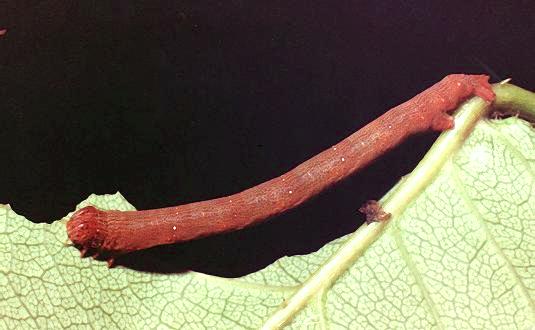
Later instars can become red then pale brown. They are peppered with dark dots or broken wiggly lines, and each segment has a ring of two or more small black-edged white spots. The head acquires a pattern of diagonal lines and a collar of black-edged pale spots.
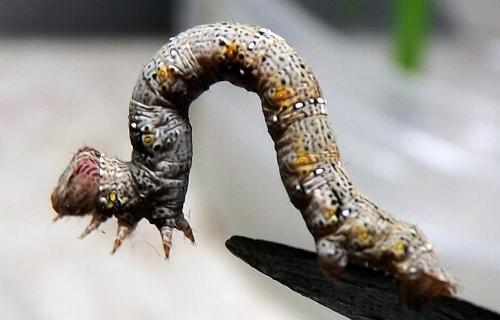
The caterpillar is a true looper, with only two pairs of prolegs. When disturbed, the caterpillar sways slowly from side to side.

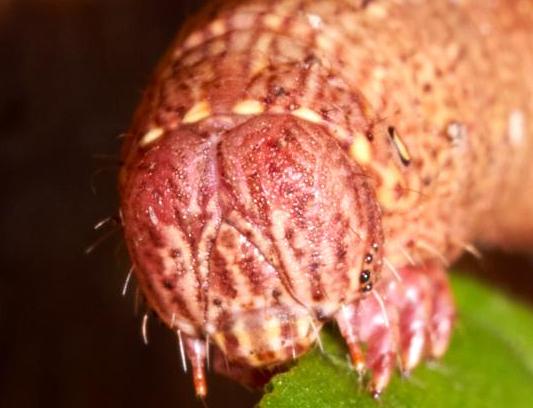
late instar head close-up
(Photo: courtesy of
Harold McQueen,
Goodna, Queensland)
The caterpillar is sometimes a pest on :
but has been found feeding on a wide variety of plants from other familes, including:
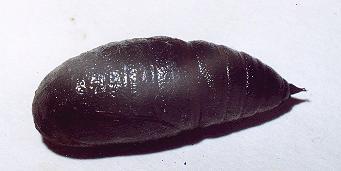
The caterpillar pupates without a cocoon under the soil, taking up to a year for metamorphosis. The pupa is dark brown and has a length of about 1.5 cms.
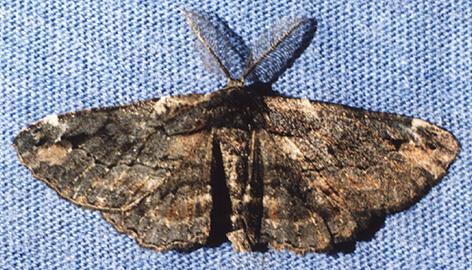
The adult moths have a wide wingspan (male 5 cms., female 6 cms.) for their body length : 1.5 cms. The wings have scalloped edges, and wavy patterns of light and dark brown. The overall colour is quite variable, sometimes being nearly black all over. The moths normally rest with wings flat, and all four wings exposed.
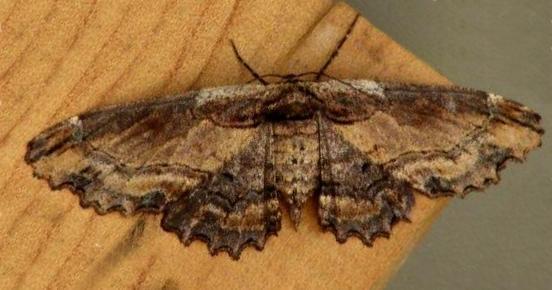
The female moths especially have a conspicuous pale bar across the part of the costa of both forewings, extending also across the thorax. The females also have thread-like antennae
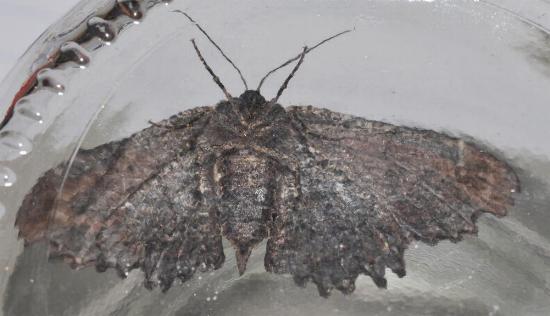
The male moths often only have some white spots on the leading edge of each forewing. The males have feathery antennae.
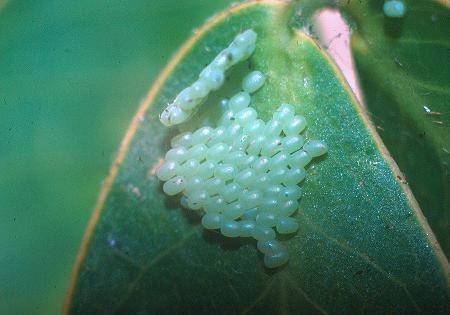
The eggs are pale green and ellipsoidal. They are laid in flat groups of up to 50 on the leaves of foodplants.
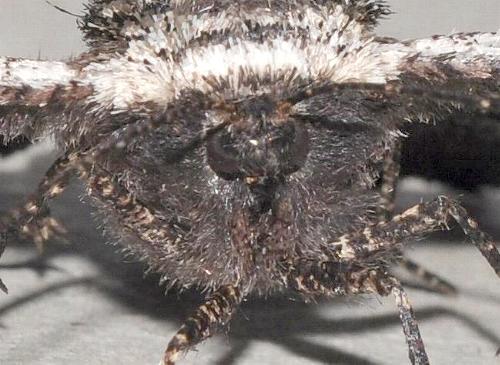
The moth occurs along most of the eastern side of Australia including:
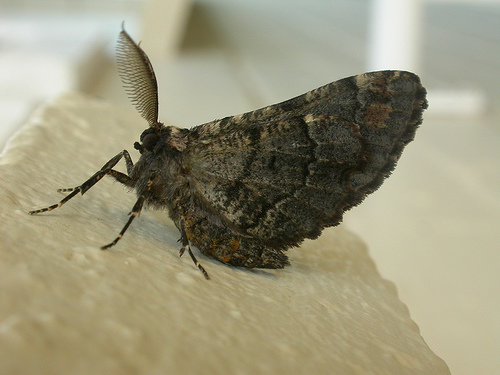
Further reading :
Ian F.B. Common,
Moths of Australia,
Melbourne University Press, 1990, figs. 36.3, 36.4, pp. 67, 367.
Achille Guenée,
Uranides et Phalénites,
in Boisduval & Guenée: Histoire naturelle des insectes; spécies général des lépidoptères,
Volume 9, Part 9 (1857), p. 212, No. 318, and
Plate 10, fig. 5.
Peter Hendry,
Have you seen this moth?,
Butterflies and Other Invertebrates Club,
Metamorphosis Australia,
Issue 55 (December 2009), pp. 27-28.
Marilyn Hewish,
Moths of Victoria: Part 7,
Bark Moths and Allies - GEOMETROIDEA (D),
Entomological Society of Victoria, 2016, pp. 18-21.
Pat and Mike Coupar,
Flying Colours,
New South Wales University Press, Sydney 1992, p. 50.
 caterpillar |  butterflies |  Lepidoptera |  moths |  caterpillar |
(updated 21 January 2013, 21 October 2025)